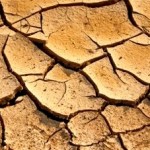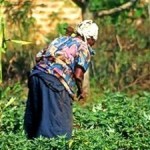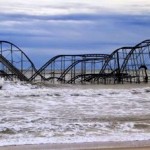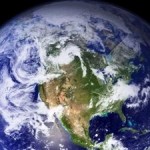The Fifth Assessment Report of the IPCC finds that it is extremely likely (over 95% probability) that human influence has been the dominant cause of the observed warming since the mid-20th century. Since the 1950s, the rate of climate change has been unprecedented compared to previous decades and millennia. The Fifth Assessment Report presents an assessment of changes in the climate system that scientists have observed around the world, as well as observed and projected climate change impacts. Since the mid-19th century, the average increase in the temperature of the Earth’s surface has been 0.85 degrees Centigrade (°C).
Globally, sea levels have risen faster than at any time during the previous two millennia – and the effects are already felt in South Asia. Changing patterns of rainfall or melting snow and ice are altering freshwater systems, affecting the quantity and quality of water available in many regions, including South Asia. Climate change will have widespread impacts on South Asian society and South Asians’ interaction with the natural environment. Climate change will impact settlements and infrastructure through flooding, human health, and contribute to food and water shortages in South Asia.
Given the interdependence among countries in today’s world, the impacts of climate change on resources or commodities in one place will have far-reaching global effects on prices, supply chains, trade, investment and political relations in other places. Climate change will progressively threaten economic growth and human security in complex ways, in this region and across the world.
The IPCC finds many observed changes in South Asia’s climate. Warming has occurred, at a country scale, across most of South Asia over the 20th century and into the 2000s. Records indicate that it is likely that the numbers of cold days and nights have decreased and the numbers of warm days and nights have increased across most of Asia since about 1950. Heatwave frequency has increased since the middle of the 20th century in large parts of Asia. Observations show that there have been more extreme rainfall events and fewer weak rainfall events in the central Indian region.
Changes of sea level in the Indian Ocean have emerged since the 1960s, driven by changing wind patterns. Today already, climate-related risks threaten lives, food security, health and wellbeing across many parts of South Asia. There are clear signs that climate change is already happening.
The Asia region as a whole experienced the most weather and climate-related disasters in the world between 2000 and 2008 and suffered the second highest proportion (almost 30%) of total global economic losses. The risk of deaths due to flooding is highly concentrated in Asia. At the same time, as sea levels are rising, most Asian deltas are sinking as a result of groundwater extraction, floodplain engineering and trapping of sediments by dams. Severe floods in Mumbai in 2005 have been attributed to both climatic and non-climatic factors, suggesting an interaction between climate change and other stressors.
Check the following link to read/download the Full Report:
http://cdkn.org/ar5-toolkit/ar5-south-asia/
Source: TERI.














